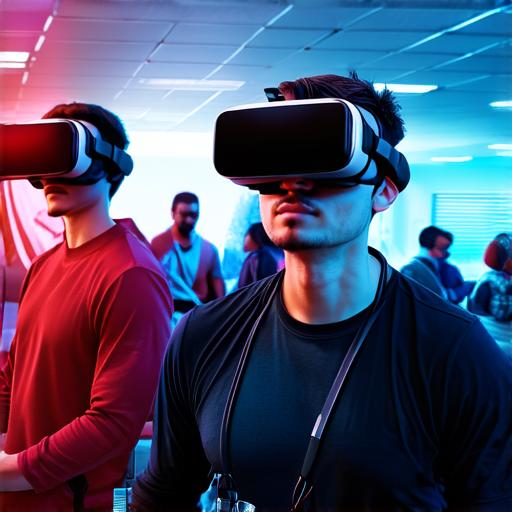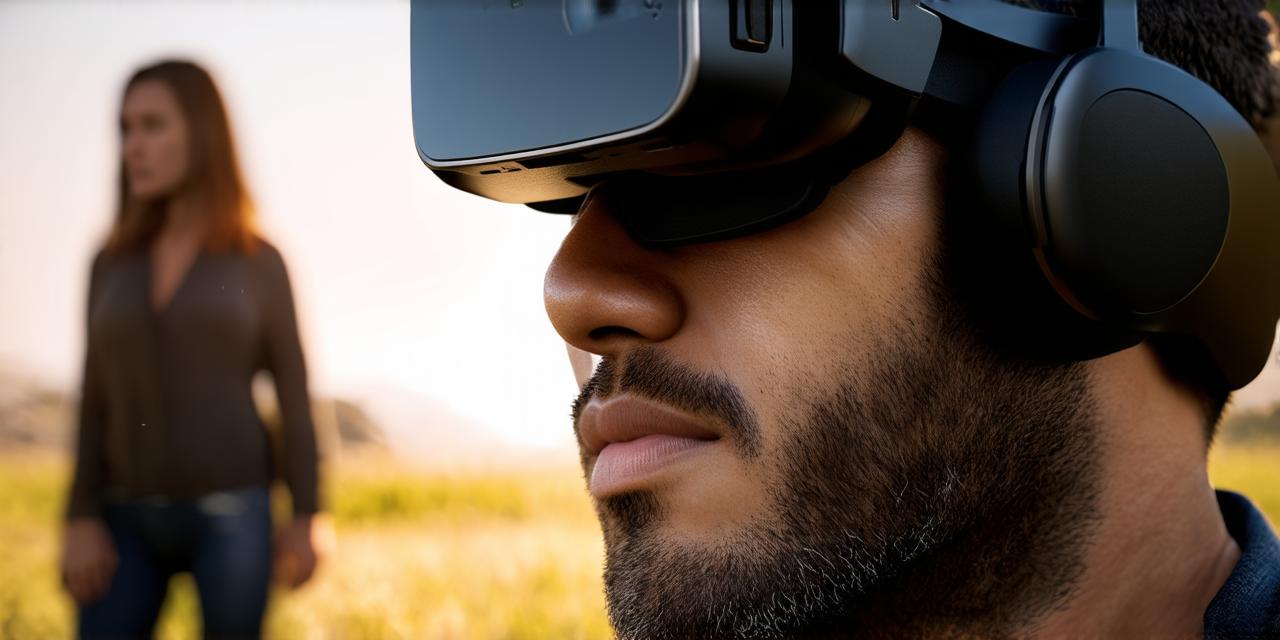What is Virtual Reality Therapy?
Virtual reality therapy involves using computer-generated simulations to create immersive experiences that can be used to treat a variety of conditions, including anxiety disorders, post-traumatic stress disorder (PTSD), phobias, and chronic pain. VR therapy has been shown to be effective in reducing symptoms and improving outcomes for patients compared to traditional treatments.

The Benefits of Virtual Reality Therapy
-
Immersive Experience: VR therapy provides an immersive experience that can be used to simulate real-life situations, making it ideal for treating conditions such as anxiety disorders and phobias. By exposing patients to a safe environment where they can confront their fears or anxieties, VR therapy can help them overcome these challenges and improve their overall well-being.
-
Customizable Experiences: VR therapy allows for customized experiences that can be tailored to the specific needs of each patient. This includes adjusting the intensity, duration, and frequency of exposure to various stimuli. By doing so, therapists can create a treatment plan that is specifically designed to meet the needs of their patients.
-
Cost-Effective: Compared to traditional in-person therapy sessions, VR therapy can be more cost-effective in the long run. This is because VR therapy allows for a larger number of treatment sessions to be conducted within a shorter period of time, which can result in significant savings over time.
-
Safe Environment: VR therapy provides a safe environment where patients can confront their fears or anxieties without fear of harm or judgment. This can be especially beneficial for individuals who have difficulty with traditional in-person therapy.
-
Real-Time Feedback: VR therapy allows for real-time feedback that can help therapists track patient progress and adjust treatment plans accordingly. This can lead to more effective outcomes and better overall results for patients.
Applications of Virtual Reality Therapy
Virtual reality therapy has a wide range of applications across various fields, including mental health, physical rehabilitation, and education. Some examples of how VR therapy is being used include:
-
Mental Health: VR therapy is being used to treat a variety of mental health conditions, including anxiety disorders, depression, PTSD, and phobias. By simulating real-life situations, patients can confront their fears or anxieties in a safe environment that allows them to gradually overcome these challenges.
-
Physical Rehabilitation: VR therapy is being used to help individuals with physical rehabilitation by providing a virtual environment where they can practice movements and exercises that are not possible in real life. This can be especially useful for individuals with mobility limitations or those recovering from injuries.
-
Education: VR therapy is being used in education as an immersive learning experience that allows students to explore new concepts and ideas in a virtual environment. This can help students develop critical thinking skills, creativity, and problem-solving abilities.
-
Gaming: Virtual reality gaming has become increasingly popular in recent years, with many games designed specifically for VR technology. These games can be used as a tool for therapy, helping individuals with conditions such as depression and anxiety to engage in activities that promote relaxation and stress relief.
Case Studies of Virtual Reality Therapy
Several studies have demonstrated the effectiveness of virtual reality therapy in treating a variety of conditions. Here are a few examples:
-
Treatment for PTSD: A study published in the Journal of Traumatic Stress found that VR exposure therapy was effective in reducing symptoms of PTSD in veterans who had experienced combat-related trauma. The study found that individuals who received VR exposure therapy experienced significant reductions in symptoms compared to those who received traditional cognitive behavioral therapy (CBT).
-
Treatment for Phobias: A study published in the Journal of Anxiety Disorders found that VR exposure therapy was effective in treating a variety of phobias, including spider phobia, acrophobia, and claustrophobia. The study found that individuals who received VR exposure therapy experienced significant reductions in symptoms compared to those who received traditional CBT.
-
Treatment for Chronic Pain: A study published in the Journal of Pain found that VR distraction therapy was effective in reducing chronic pain in individuals with low back pain. The study found that individuals who received VR distraction therapy experienced significant reductions in pain compared to those who did not receive any therapy.
Future of Virtual Reality Therapy
Virtual reality technology is continuing to advance, and it’s likely that we will see more applications of VR therapy in the future. As AR developers, there are several ways you can incorporate VR therapy into your work:
-
Develop VR games for mental health or physical rehabilitation: By creating VR games that are designed to promote relaxation and stress relief, you can help individuals with conditions such as depression and anxiety to engage in activities that promote healing and well-being.
-
Create VR simulations for education: By developing VR simulations that allow students to explore new concepts and ideas in a virtual environment, you can help educators create more engaging and immersive learning experiences.
-
Collaborate with therapists or mental health professionals: By collaborating with therapists or mental health professionals, you can develop VR therapy programs that are specifically designed to treat a range of conditions.
Summary
Virtual reality therapy is an exciting new treatment option that has the potential to revolutionize the way we approach mental health, physical rehabilitation, and education. As AR developers, there are several ways you can incorporate VR therapy into your work and help individuals lead more fulfilling lives. By understanding the benefits of VR therapy and its applications across various fields, you can play a key role in shaping the future of this rapidly growing field.




